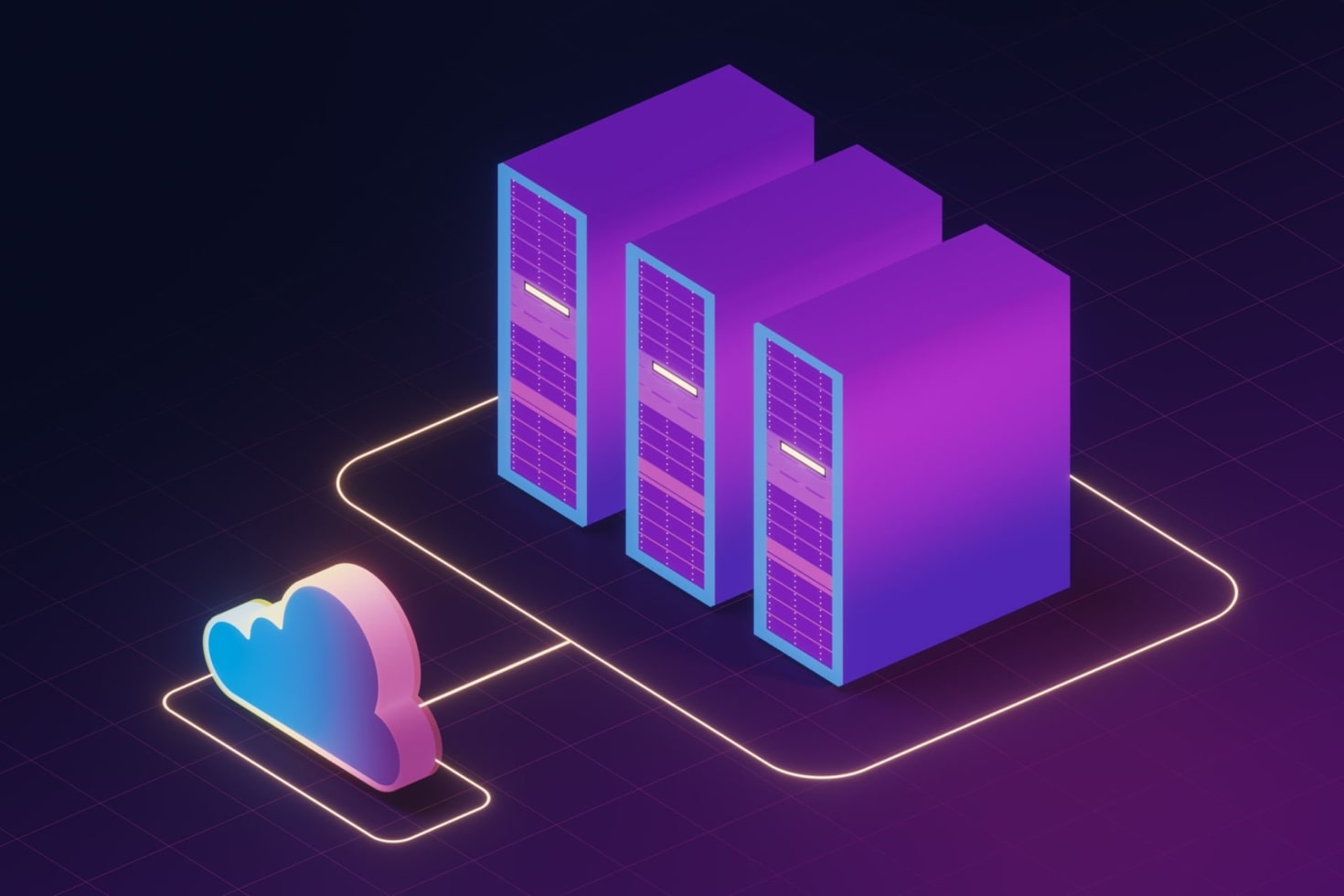Containerization technology is decades old but a current hot topic as well! Here’s everything you need to know about how it can help you successfully manage applications in the cloud.
The cloud applications market is growing rapidly, demanding faster development and advanced management. And while this is excellent news for the tech world, there’s the other side of the coin.
Engineers face intense pressure to reduce time to market while trying to maintain the scalability and functionality of highly complex apps.
Fortunately, the industry hasn’t disappointed in providing a solution to this challenge.
It’s all about containerization.
What is containerization?

Containerization is the process of “packing” entire applications (or their parts) in containers—isolated software units with specific functionality—enabling them to move from one environment to another efficiently, receive updates, and run smoothly in any system.
Containerization virtualizes the operating system (OS) and enables workloads to execute on a single OS instance. Also, a single server can host multiple containers since they are small (usually only tens of megabytes) and don’t require many technical resources.
As such, containerization is a more flexible and resource-efficient form of virtualization than traditional virtual machines (VMs).
These traits and other advantages, which we’ll discuss shortly, make containers an advanced choice for developing and managing cloud applications. And that’s precisely how the majority of businesses employ this strategy today.
The power of containerization in cloud app management
The idea of containerization has been around for a while (since 1979, to be exact!). But it took off after the release of the Docker Engine in 2013. Docker has since become the industry standard for containers, and many companies have begun to use them rather than virtual machines (VMs), which once were the preferred virtualization option.
Here are some of the ways you can use containerization to manage applications in the cloud:
- Cloud migration (“lift-and-shift”): It’s the process of encapsulating legacy applications in containers and migrating them to a cloud computing environment. It enables businesses to modernize their apps without having to rewrite the entire code.
- Workload migration: Since containers are standardized, isolated units, developers can quickly transfer workloads between the public cloud and on-premise data centers.
- Microservices: A microservices architecture comprises many small and independent services working together. Therefore, containerization, as an excellent method to deploy separated bits of code, fits perfectly for applications with such architectures.
- DevOps: By bundling applications into portable and lightweight units, containerization allows for efficient deployment and scaling of the DevOps infrastructure.
Benefits of containerization for managing applications in the cloud
Let’s look at some of the top advantages of containerization in cloud computing and management.
Consistent app deployment
Containerized apps follow the “write once, run anywhere” principle. Here’s the thing: an application container can run consistently on any system and in any cloud. Virtually speaking, containers can operate on any available host machine.
You can quickly move apps from one environment to another, saving time and resources that teams might otherwise spend on rewriting code.
High scalability
In containers, apps are lightweight, start quickly, and can easily receive new features and updates. Thus, an app container can handle increasing workloads, making it simple for companies to scale their cloud applications to meet changing business needs.
This way, you don’t have to worry about compatibility or configuration issues; your solutions scale instantly and effectively without affecting the original infrastructure.
Agile development
Containerization is an essential tool for boosting the DevOps team’s performance. It allows engineers to create and deploy apps rapidly. For example, when there’s a need for an additional feature, you can quickly develop a container to handle the task. And once the component is no longer needed, you can automatically shut it down.
Agility is a massive benefit of containerization in managing cloud applications since it allows you to develop “on demand” and achieve high-level agility.
Greater resource efficiency
With containerization, multiple application containers leverage a single host OS kernel. This makes the practice more resource-efficient than traditional virtualization, where each virtual machine must have its own kernel, hypervisor, and other resources.
Also, containers are lightweight, allowing for a rapid start time and, thus, unlocking new levels of operational excellence. As a result, you can expect reductions in cloud spending and licensing costs.
Enhanced fault-tolerance
Although containers share the host operating system kernel, each is separated and functions independently of the others. This isolation prevents containers from interfering with one another, resulting in improved fault tolerance and stability.
You can think of this advantage in the following manner: Imagine a conveyor belt with boxes on it. If one of the boxes catches fire, you can put it out before it spreads to the others.
Similarly, if there are issues with your app, your team may quickly respond by isolating the faulty containers and fixing their codes without causing downtime in the application.
A silver bullet for modern cloud application management
As you can see, using containerization for managing applications in the cloud is a powerful method with some significant advantages over its predecessors, VMs.
Containers are more lightweight, require fewer technical resources, operate at higher speeds, and enable you to create highly scalable apps.
Hence, it’s evident that containerization can be the silver bullet you’ve been looking for to successfully manage cloud applications, boost your development process, and thrive in the modern tech market.
Related Posts:
- Why Interoperability is a Weakness in Cloud Computing
- Three Types Of Cloud Storage And Their Benefits
- The Importance of Securing Your Cloud-Native Applications
- How to Conduct a Cloud Security Assessment? – 5 Steps
- Benefits of Utilizing DevSecOps for Software Development
- Top 11 Enterprise Software Development Trends
